
CLEAN NIGERIA: USE THE TOILET CAMPAIGN
Streamlining Progress Tracking with a Data-Driven Admin Portal to Eradicate Open Defecation in Nigeria

MY ROLE
-
Collaborated with front-end developers to seamlessly execute the end-to-end design process.
-
Created visually appealing and interactive prototypes.
-
Conducted user research and usability testing, and developed design systems.
Platform: Web-app
Year: 2023
Industry Sector: NGO (Water & Sanitation)
Collaboration Tools: Figma, Asana, Google Doc.
PROJECT OVERVIEW
BACKGROUND
The "Clean Nigeria: Use the Toilet" campaign is a non-profit initiative aiming to eradicate open defecation in Nigeria by 2025. Currently, 1 in 4 Nigerians (24.4%) still defecate in the open, leading to the spread of preventable diseases such as diarrhea, cholera, typhoid, and dysentery. Particularly concerning is the North Central region, where 1 in 2 people practice open defecation. The campaign focuses on fostering a culture of safe and hygienic defecation through the provision of clean, accessible sanitation facilities, especially in rural areas.


THE PROBLEM
Despite the ongoing efforts of the "Clean Nigeria: Use the Toilet" campaign, monitoring the progress and ensuring the sustainability of open defecation-free (ODF) status remains a significant challenge. In regions like the North Central, where 53.9% of the population still defecates in the open, it’s crucial to have a reliable digital platform to track data and maintain accountability. Without effective monitoring, it becomes difficult to gauge real-time progress and ensure long-term success in eliminating open defecation practices across the country.
THE SOLUTION
To support the goal of eradicating open defecation by 2025, I developed a web-based admin portal for the campaign. The platform transforms raw data into user-friendly, visual dashboards, enabling administrators to monitor ODF metrics and progress throughout Nigeria. With interactive data visualizations and customized reports, the portal simplifies the presentation of sanitation statistics, providing real-time insights to enhance accountability and engagement. This tool ensures ongoing monitoring of efforts, empowering local leaders to take effective action as necessary to keep the mission on course.



RESEARCH
PROJECT KICK-OFF
We adopted a goal-directed design approach for the CNC Admin Portal, prioritizing seamless progression and ensuring we adhered to the project timeline. The design process centered around three core principles: communication, collaboration, and iteration—key pillars that shaped the portal’s functionality.

UNDERSTANDING THE MARKET
To kickstart the admin portal's design, I conducted secondary and primary research. The objective was to:
-
Understand how initiatives aimed at eliminating open defecation operate.
-
Identify key features and challenges within the sector.
-
Gain insights into user dynamics and stakeholder needs.
-
Formulate a strategy to guide the portal’s development.
COMPETITIVE ANALYSIS
I performed a competitive analysis of similar platforms, including initiatives like Washims and The Swachh Bharat Mission. This helped identify industry trends, best practices, and potential opportunities for innovation. The analysis also revealed the strengths and weaknesses of competitor applications, providing valuable insights for refining our design approach.
.png)
SYNTHESIS AND CONSIDERATIONS
-
Implement customizable elements to adapt to varying regional and community-specific needs.
-
Incorporate clear and concise design elements, prioritizing ease of use for administrators.
-
Ensure that data is presented in a manner that facilitates quick understanding and decision-making.
-
Implement transparent reporting functionalities to promote accountability.
USER INTERVIEWS AND PROFILING:
To gain a deeper understanding of the target users for the admin portal, I conducted user interviews with both admin personnel and local government (LG) community field agents. My goal was to:

DEFINING THE PROBLEM
PROBLEM STATEMENT & GOALS
Based on the insight gathered from the research, my primary focus is on creating a more seamless and intuitive experience for admin users. The "How Might We" statements serve as guiding prompts for the design process.
How might we enhance the efficiency of admin users in monitoring and ensuring the sustainability of the Open Defecation Free (ODF) status across various regions in Nigeria?
.png)
PRODUCT GOALS
The product goals focused on creating an intuitive user interface for seamless navigation, implementing clear and accessible data visualization tools to present ODF metrics effectively, and incorporating customizable features that allow admins to tailor the platform to diverse regional and community-specific sanitation needs.
IDEATION
CREATING STRUCTURE
I created a user flow based on the key features outlined in the product roadmap to provide more insight into how to build the core experience for the CNC's admin portal. This flow focuses on the user's entry and endpoints, allowing us to focus on creating a simplified and effective user experience.
%20(1).png)
VISUALIZING A SEAMLESS INTERACTION
To visualize a seamless integration of content within the CNC Admin Portal, I began by creating quick sketches on Figjam. This exploration focused on logically arranging elements to address the specific needs of administrators and facilitate a more intuitive navigation experience between screens. After refining these initial sketches, I transitioned to developing low-fidelity wireframes, which served as a foundational step for gathering feedback from stakeholders and users. This iterative process was crucial for streamlining the design before advancing to high-fidelity prototypes.
Key iterations focused on:
-
Enabling easy access for admins to view Open Defecation Free (ODF) details by hovering over specific states.
-
Allowing admins to filter and retrieve detailed ODF information for any state.
-
Ensuring admins could track progress indicators effectively.
-
Incorporating user management features for adding or removing personnel based on roles.
HIGH-FIDELITY PROTOTYPES
After an extensive process of reviews and iterations, the finalized admin portal for the CNC project is designed to be visually appealing and user-friendly. It empowers administrators to monitor and track progress toward eliminating open defecation practices in Nigeria.
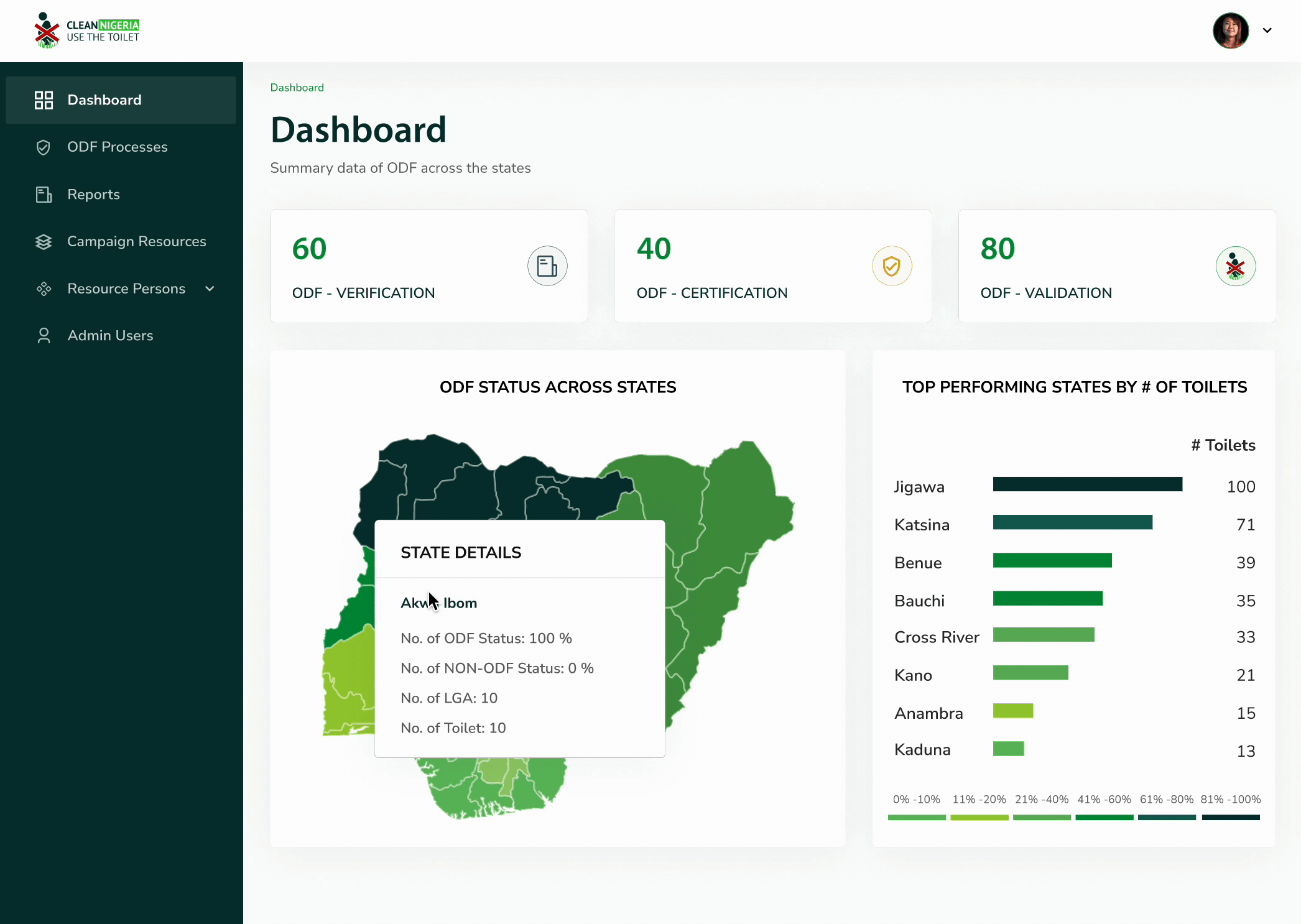
Interactive Map Data Visualization
The interactive map is designed to display further data on the state status when users hover over a specific state to improve user-friendliness.
Progress Indicator
For visual monitoring and tracking of ODF progress in each local government (LG), a checkmark progress bar was utilized to facilitate decision-making for administrators toward providing clean sanitation facilities.
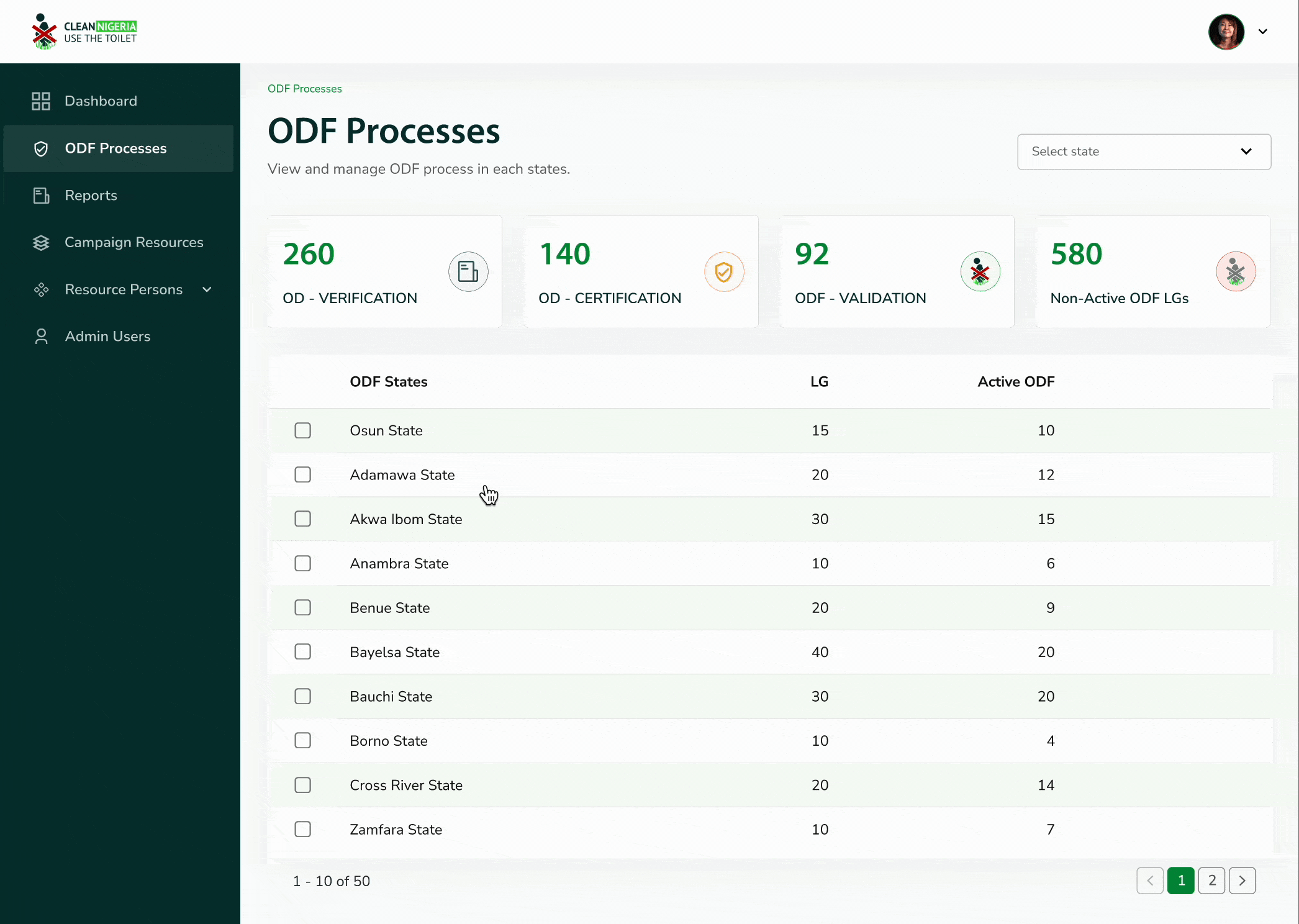
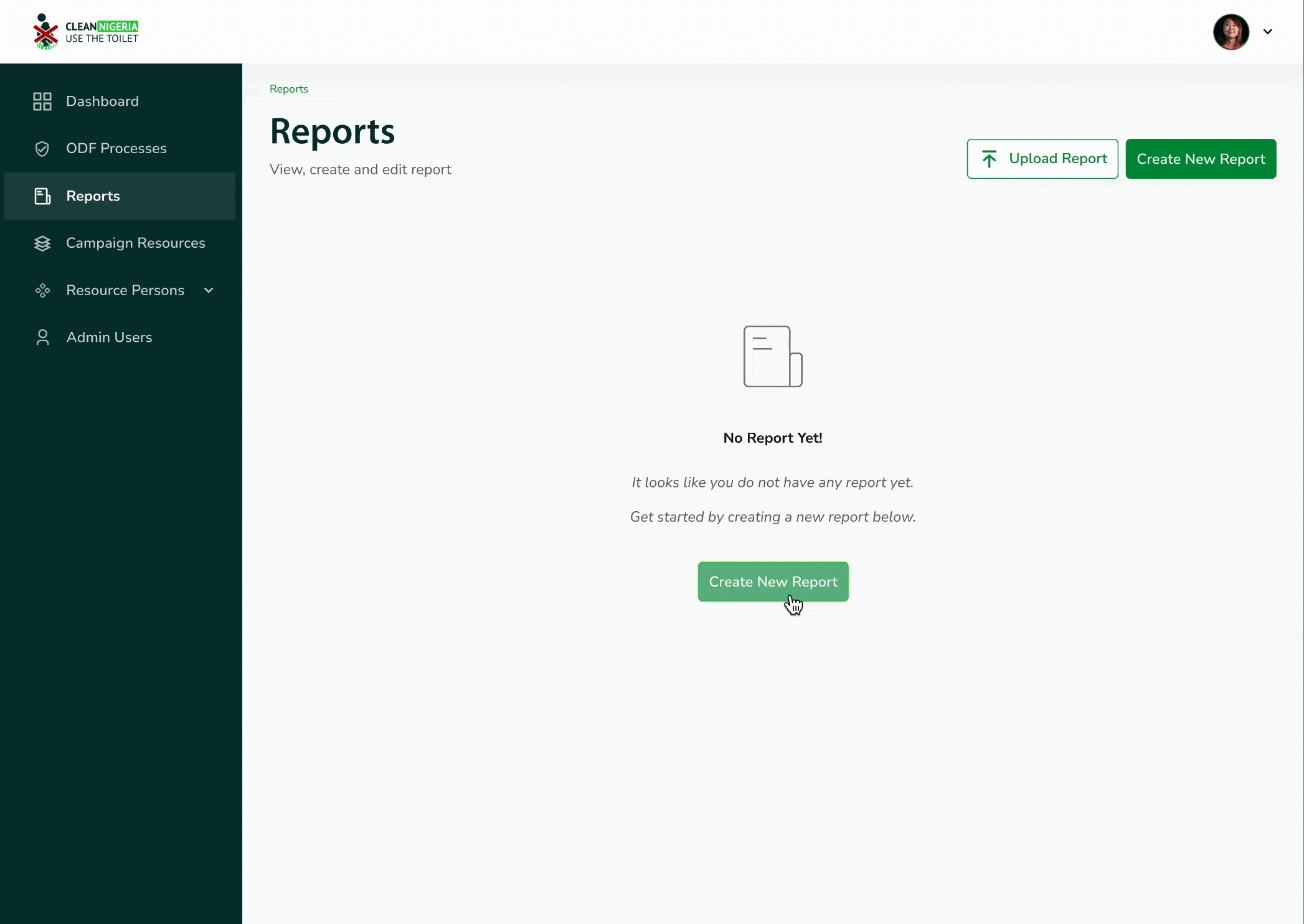
Decision Controls
This functionality allows the admin to either approve or reject reports and also provide valuable feedback. The control feature ensures that admin users have the tools to actively manage and guide the progress of sanitation initiatives based on the information presented in the reports.
File Format Differentiation
In order to enable campaign personnel to effectively assess and utilize uploaded content according to their specific file type preferences or requirements, file formats were employed to differentiate the files. This approach enhances efficiency and ensures compatibility with personnel preferences.
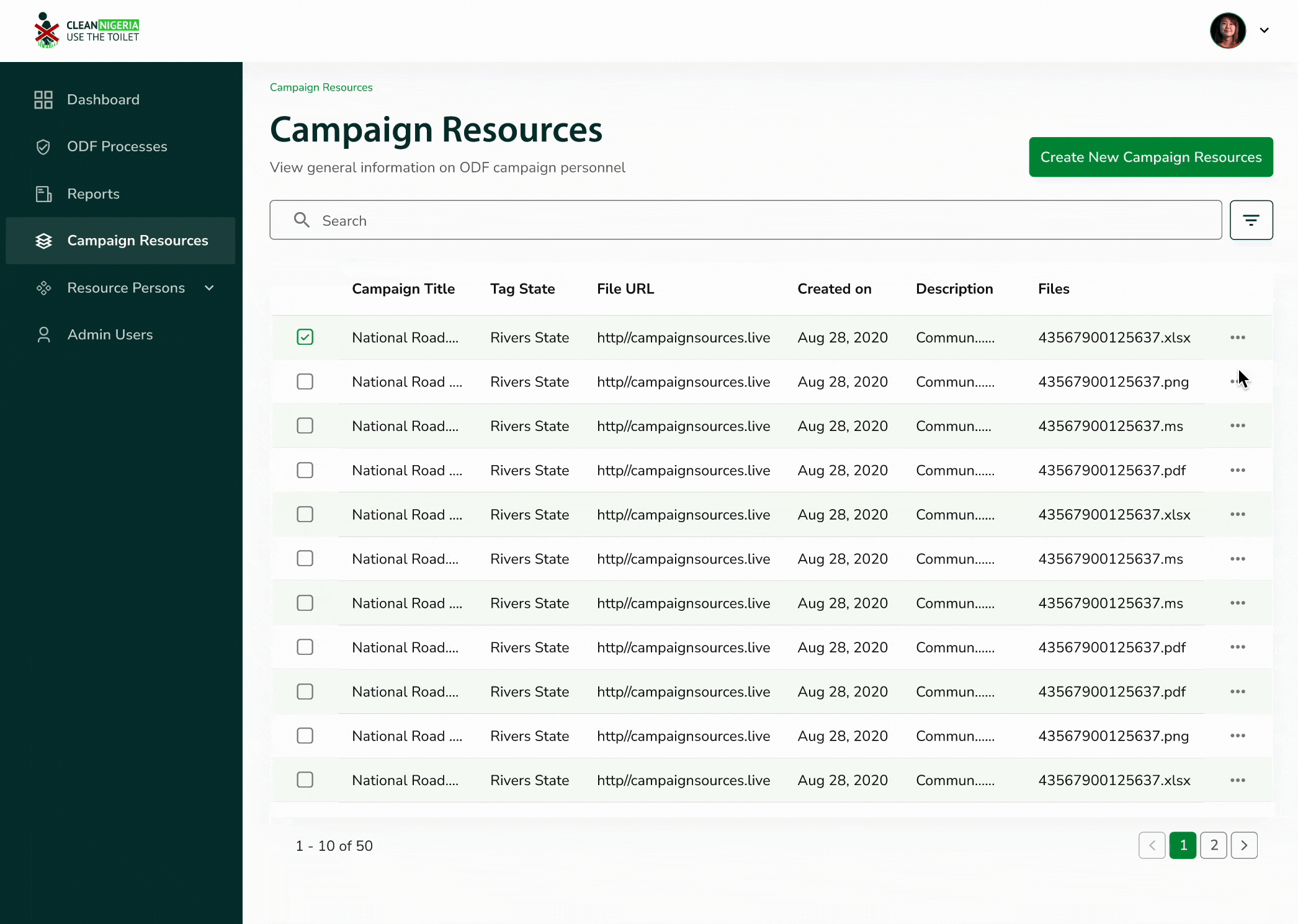
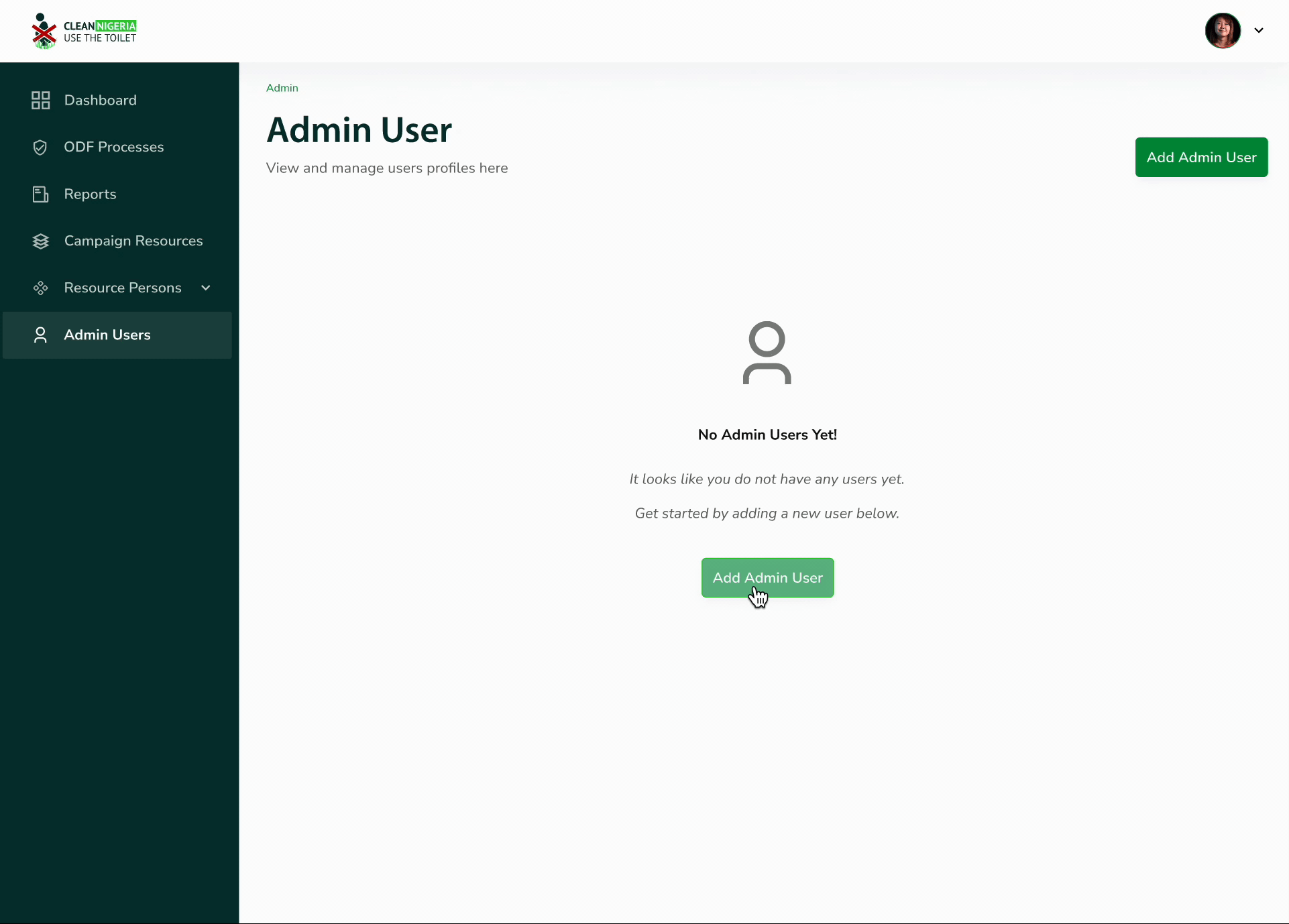
Admin-Focused Navigation
The navigation layout is designed to aid admin personnel in effortlessly carrying out tasks such as report review and approval, and user management. This design ensures that the admin's responsibilities are easily accessible, fostering efficiency and effectiveness in managing the ODF campaign.
.png)
.png)
USABILITY TESTING
DESIGN SYSTEM
DEVELOPER HAND-OFF
To ensure design consistency and a smooth transition to developers, I created reusable design components that allowed for flexibility while maintaining uniform UI patterns. During the collaborative phase, I worked closely with engineers to align design and implementation, ensuring technical feasibility and promoting efficiency throughout the project.
CONCEPT VALIDATION AND FEEDBACKS
To evaluate the effectiveness of the admin portal, usability testing was conducted with stakeholders and four admin users. The testing focused on functionality, layout, visual design, and interactivity. The objectives were to assess the simplicity and ease of navigation of the user interface, evaluate the clarity of data visualization in presenting ODF metrics, and determine the intuitiveness of customization features for administrators.
-
User Interface Validation: Admins found the interface simple and easy to navigate.
-
Data Visualization: The map hover feature effectively conveyed information, though clearer labels were suggested.
-
Customization Features: While versatile, some admins needed additional guidance on personalizing their dashboards.

CONCLUSION
IMPACT & KEY TAKEAWAY
-
Improved Monitoring and Tracking: The CNC Admin Portal enhanced the ability to track and monitor ODF progress.
-
Early Engineering Involvement: Involving engineers early in the process minimized rework and improved design strategy.
-
Design for Efficiency: Utilizing a design system streamlined development and ensured visual consistency.
-
Collaborative Exploration Cross-functional collaboration enriched the design process, leading to innovative solutions.
NEXT STEPS
If I were to continue, I would explore the following:
-
Explore additional features based on user feedback and emerging requirements to enhance the admin portal's functionality.
-
Continue collaborative discussions with stakeholders to gather insights and align the admin portal with broader organizational goals.
-
Conduct further usability testing to gather additional user feedback and address any potential pain points.
-
Continue designing better experiences by adhering to established design principles and aligning with the product roadmap.



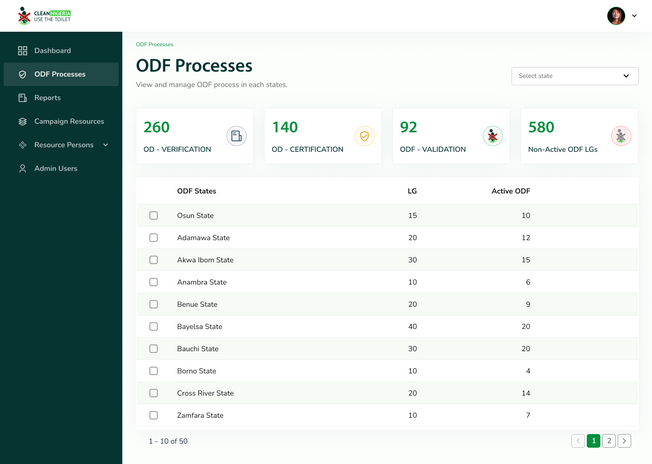





.png)






